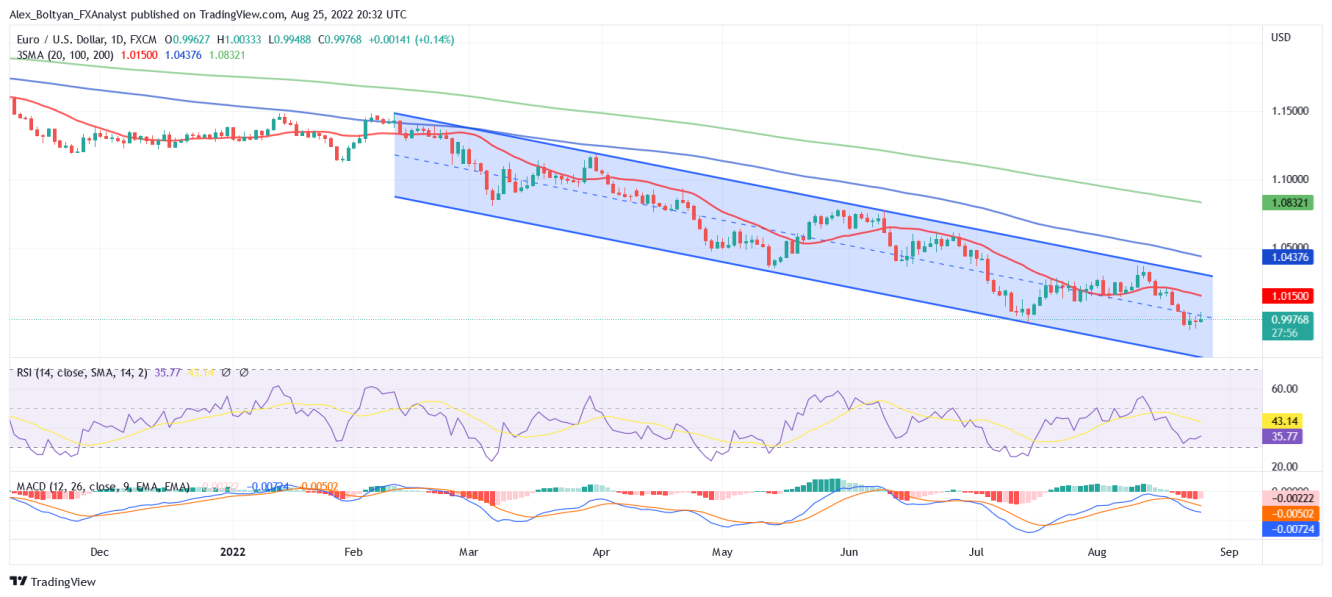The EUR/USD pair ended Thursday virtually unchanged as upbeat U.S. economic data helped the dollar gather strength and reverse most of the European session losses.
At the time of writing, the pair trades at the 0.9975 area, 0.15% above its opening price, having pulled back from a daily peak of 1.0033.
Germany upwardly revised its GDP figures for Q2 and reported an increase of 1.7% YoY, better than the 1.4% previously estimated. In addition, August’s IFO survey data also helped the euro to get a boost as Business Climate figure Current Assessment and Expectations surveys rose above the market’s expectations.
Additionally, the European Central Bank released minutes from July’s meeting and showed that many of the Governing Council members decided on the 50 bps hike. The report also noted that the officials agreed it was appropriate to take further steps on the path of monetary policy normalization.
In the meantime, U.S. GDP for the second quarter was upwardly revised from -0.9% to -0.6%. Separated data showed Initial Jobless Claims for the week that ended on Aug.19 fell to 243,000. Market participants will keep an eye on the Jackson Hole Economic Symposium and Jerome Powell’s speech on Friday.
From a technical perspective, the EUR/USD retains a short-term bearish bias as the pair has repeatedly failed to establish itself above parity.
Still, indicators on the daily chart suggest a deceleration of the selling pressure, with the RSI holding a neutral slope below its midline while the MACD printed a lower red bar.
On the upside, the immediate resistance level is seen at the 1.0000 psychological level, followed by the 1.0050 area and 1.0100. On the other hand, the next support level could be faced at the 0.9900 and 0.9800 levels. A break below could push the pair to the 0.9700 area, where the lower end of a descending channel drawn from February highs reinforces the psychological level.


